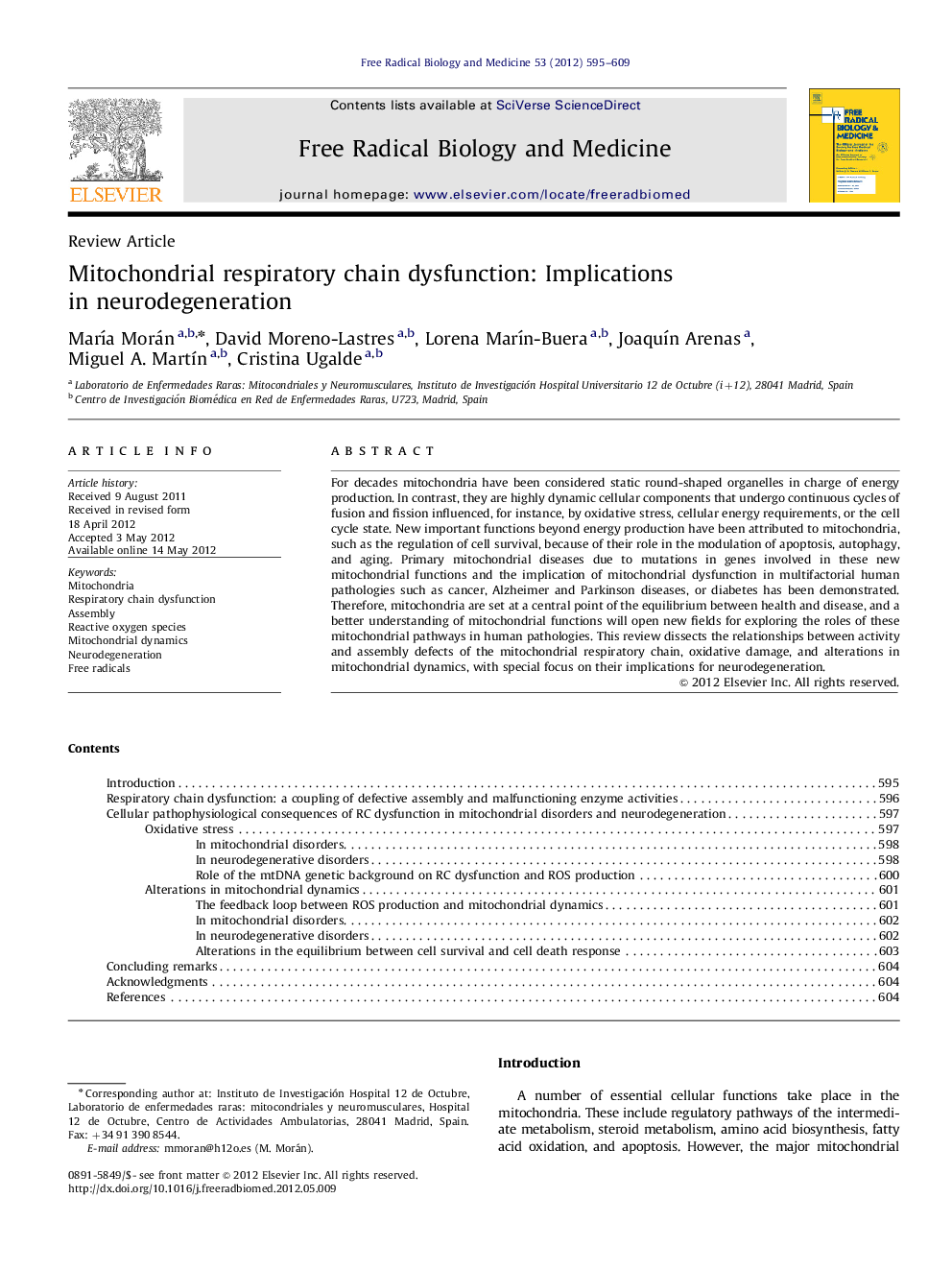| Article ID | Journal | Published Year | Pages | File Type |
|---|---|---|---|---|
| 1908666 | Free Radical Biology and Medicine | 2012 | 15 Pages |
For decades mitochondria have been considered static round-shaped organelles in charge of energy production. In contrast, they are highly dynamic cellular components that undergo continuous cycles of fusion and fission influenced, for instance, by oxidative stress, cellular energy requirements, or the cell cycle state. New important functions beyond energy production have been attributed to mitochondria, such as the regulation of cell survival, because of their role in the modulation of apoptosis, autophagy, and aging. Primary mitochondrial diseases due to mutations in genes involved in these new mitochondrial functions and the implication of mitochondrial dysfunction in multifactorial human pathologies such as cancer, Alzheimer and Parkinson diseases, or diabetes has been demonstrated. Therefore, mitochondria are set at a central point of the equilibrium between health and disease, and a better understanding of mitochondrial functions will open new fields for exploring the roles of these mitochondrial pathways in human pathologies. This review dissects the relationships between activity and assembly defects of the mitochondrial respiratory chain, oxidative damage, and alterations in mitochondrial dynamics, with special focus on their implications for neurodegeneration.
Graphical abstractFigure optionsDownload full-size imageDownload high-quality image (720 K)Download as PowerPoint slideHighlights► Disturbance of respiratory chain complex assembly induces respirasome disassembly. ► Respiratory chain disassembly can result in increased reactive oxygen species production. ► Respiratory chain dysfunction and oxidative stress are key players in neurodegeneration. ► The reactive oxygen species–mitochondrial dynamics loop is altered in neurodegeneration.
